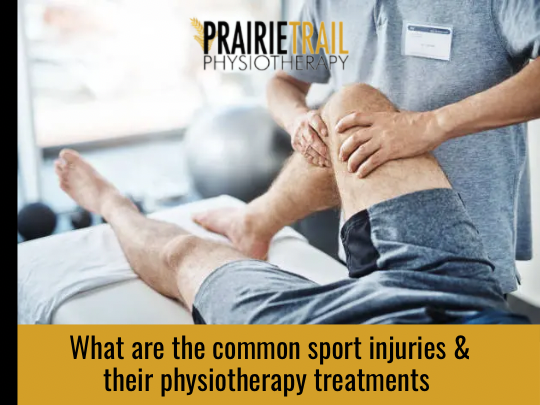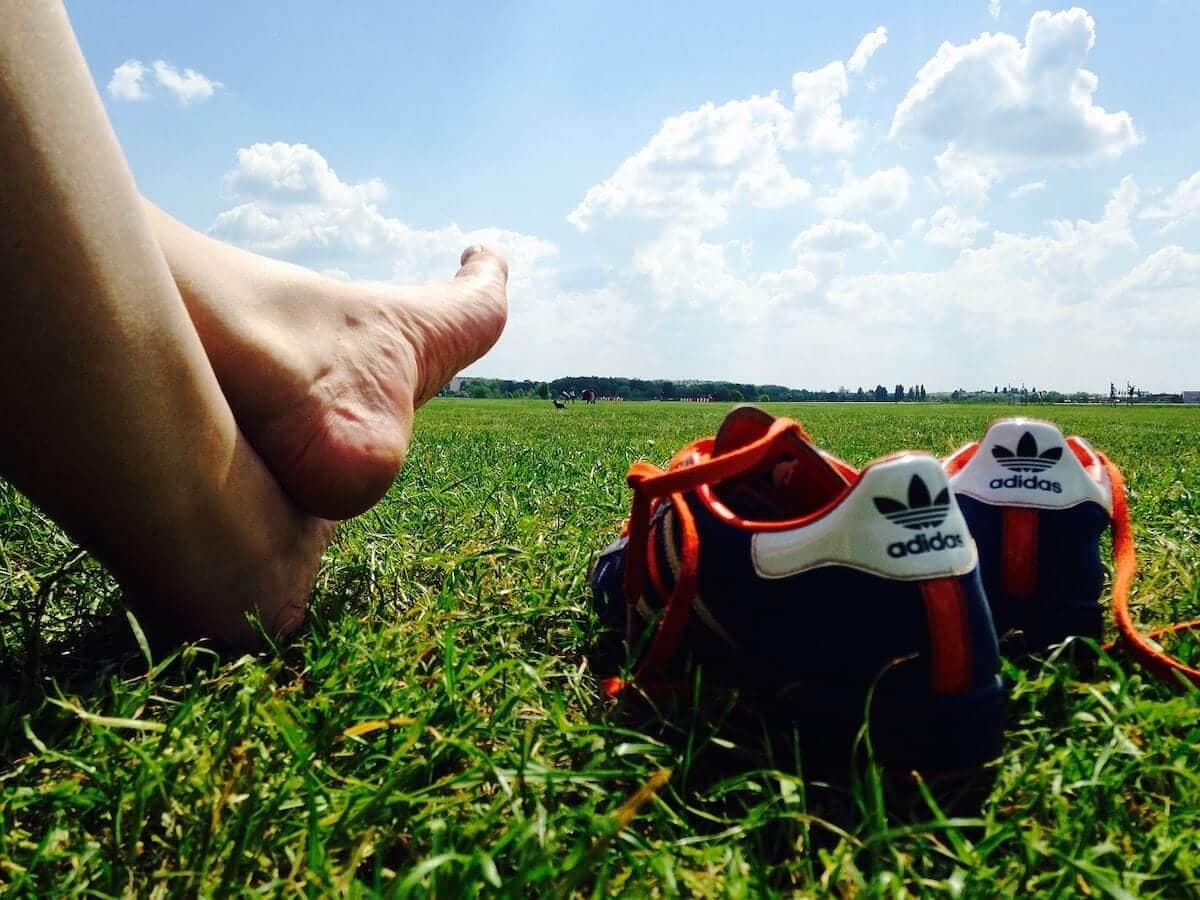Discover Pandipedia
Pandipedia is the world's first encyclopaedia of machine generated content approved by humans. You can contribute by simply searching and clicking/tapping on "Add To Pandipedia" in the answer you like. Learn More
Expand the world's knowledge as you search and help others. Go you!

Professional sports, characterized by high-intensity physical exertion and risk of injury, frequently lead to various types of injuries. Understanding these common injuries and their treatment methods is essential for athletes, coaches, and sports enthusiasts alike.
Types of Common Sports Injuries
Sprains and Strains
:max_bytes(150000):strip_icc()/GettyImages-1012118058-0d5b34c8d59a4cf2b7c9bfc7cc3259e7.jpg)
One of the most common injuries across all sports is sprains, which involve the stretching or tearing of ligaments, and strains, which affect muscles or tendons. For instance, ankle sprains are prevalent and occur when the ligaments supporting the ankle stretch or tear, often due to rolling the foot in an unnatural direction[4]. Hamstring strains frequently happen in sports requiring explosive starts or sudden stops, and are particularly common in sports like soccer and basketball[6].
Soft Tissue Injuries
Injuries to soft tissue, including tears in muscles, tendons, or ligaments, are frequently encountered. Knee injuries such as meniscal tears and anterior cruciate ligament (ACL) tears are common in sports that involve a lot of pivoting and sudden directional changes like football and basketball[5]. Tendinitis, such as Achilles tendinitis and patellar tendinitis, arises from repetitive strain on tendons and is prevalent among runners and jumpers[2][4].
Head Injuries
Concussions are significant concerns in contact sports, resulting from impacts to the head that can lead to cognitive impairment. The symptoms may range from confusion and headache to dizziness and memory issues[1][6]. Immediate medical evaluation is critical following any head trauma to prevent serious long-term effects.
Fractures and Dislocations
Fractures, or broken bones, can occur from sudden impacts or falls and are particularly common in contact sports[4]. Dislocations happen when bones in a joint are forced out of position, commonly seen in shoulders and fingers during high-contact situations. The treatment for both fractures and dislocations often requires immobilization and sometimes surgical intervention[2][5][4].
Overuse Injuries
Chronic injuries develop over time due to repetitive stress on specific body parts. Conditions such as shin splints, stress fractures, and carpal tunnel syndrome fall into this category and are often seen in athletes who engage in high-impact activities without proper recovery[2][6].
Treatment Options for Sports Injuries
Initial Management: R.I.C.E. Protocol
The initial treatment for most acute injuries generally follows the R.I.C.E. method—Rest, Ice, Compression, and Elevation. This approach helps minimize swelling and pain immediately after the injury occurs[4][6]. Resting the injured area, applying ice to reduce inflammation, using compression bandages to support the area, and elevating the injured limb are fundamental steps in managing acute injuries effectively.
Medical Evaluation

If symptoms persist or worsen despite initial treatment, seeking medical attention is crucial. Health care providers will evaluate the injury, often requiring diagnostic imaging (X-rays, MRI) to determine the extent of the injury and to rule out fractures or further soft tissue damage[2][4][6].
Rehabilitation

Physical therapy plays a vital role in recovery from most sports injuries. A structured rehabilitation program involving strength training, flexibility exercises, and gradual return to activity is essential to prevent recurrence[4][5]. For instance, athletes recovering from ACL injuries will undergo specific exercises aimed at rebuilding strength and stability in the knee joint[6].
Surgical Intervention
Some injuries, especially severe ligament tears or fractures, may require surgical repair. Decisions regarding surgery depend on the location and severity of the injury and the athlete's level of competition[5]. A specialist can provide options based on the athlete's individual circumstances.
Prevention Strategies

To minimize the risk of injuries, athletes are encouraged to engage in proper warm-up and cool-down routines, strength training, and agility drills. Wearing appropriate athletic gear and ensuring that equipment fits correctly also reduce the likelihood of injuries[4][5]. Additionally, athletes should listen to their bodies and allow adequate recovery time post-injury to avoid overuse issues[6].
Conclusion
Sports injuries are a common part of athletic endeavors, impacting participants at all levels. Understanding the types of injuries, their symptoms, and treatments can help in effectively handling incidents and ensuring a safe return to play. Maintaining proper training routines and preventive measures is essential for minimizing the occurrence of injuries during sports activities.
Let's look at alternatives:
- Modify the query.
- Start a new thread.
- Remove sources (if manually added).
- Request a manual search from our human research team.

The invention of the sail is credited to ancient civilizations, particularly the Egyptians, with evidence supporting this assertion. The earliest known use of sails dates back to around 4000 BCE in ancient Egypt, where individuals began constructing simple sailing vessels using reeds, which were then equipped with a rudimentary sail made of cloth suspended from a mast to harness the wind for propulsion[1][4][6][10].
Other early references to the sail indicate that by 3000 BCE, the Egyptians were utilizing square sails on boats primarily for use on the Nile River. These developments in sailing technology contributed significantly to navigation and trade, facilitating movement along waterways[2][3][5][11].
Additionally, archaeological evidence suggests that sailing boats were also being utilized in Mesopotamia around the same time, with depictions dating back to approximately 5500 BCE[3][10]. The idea of utilizing sails is believed to have evolved as a result of experimentation, where early humans likely noticed the effectiveness of using a fabric to catch the wind, thereby propelling their vessels forward[10].
Overall, while a specific individual cannot be identified as the 'inventor' of the sail due to its ancient origins, the early contributions from civilization such as the Egyptians and Mesopotamians were vital to its development.
Let's look at alternatives:
- Modify the query.
- Start a new thread.
- Remove sources (if manually added).
- Request a manual search from our human research team.
Get more accurate answers with Super Search, upload files, personalised discovery feed, save searches and contribute to the PandiPedia.
/cdn.vox-cdn.com/uploads/chorus_asset/file/23951350/STK043_VRG_Illo_N_Barclay_6_Meta.jpg)
Meta is reportedly developing its own AI-powered search engine to reduce its dependence on Google and Microsoft Bing, which currently provide data for its AI chatbot used across platforms like Facebook and Instagram. This initiative aims to offer AI-generated summaries of current events and enable more conversational responses without relying on external search platforms[1][2][3].
The development team has been working on this project for about eight months, focusing on web-crawling technologies to build a comprehensive information database. This move reflects CEO Mark Zuckerberg's desire for Meta to operate independently from competitors, addressing concerns about past reliance on other tech giants[4][5].
Let's look at alternatives:
- Modify the query.
- Start a new thread.
- Remove sources (if manually added).
- Request a manual search from our human research team.

El grounding, també conegut com a earthing, és la pràctica de connectar físicament el cos humà amb la terra per absorbir els seus electrons naturals, la qual cosa ajuda a millorar la salut i el benestar general. Aquesta connexió es pot realitzar caminant descalç sobre la terra, l'herba o la sorra, i fins i tot mitjançant l'ús de dispositius dissenyats per simular aquest efecte com ara alfombres i sábanes conductores[1][2][3].
Els beneficis del grounding inclouen la reducció de l'estrès i l'ansietat, millora del son, disminució de la inflamació i el dolor, així com una millora en la circulació sanguínea[5]. La teoria darrere del grounding es basa en que la terra té una càrrega elèctrica negativa que pot neutralitzar radicals lliures en el cos, millorant així els processos bioelèctrics i bioquímics[5].
És recomanable practicar el grounding en soledat o quan es pugui, ja que passar temps a l'aire lliure permet disfrutar dels beneficis d'estar en contacte directe amb la natura[1][3][4].
Let's look at alternatives:
- Modify the query.
- Start a new thread.
- Remove sources (if manually added).
- Request a manual search from our human research team.

Edward Snowden was a whistleblower who released a lot of secret documents that showed a bunch about government surveillance programs.
One of the programs, which is relevant to this, called PRISM, was about the government requesting kind of direct access to big technology companies, including Google, so they could get - easily search email history, that kind of thing.
Let's look at alternatives:
- Modify the query.
- Start a new thread.
- Remove sources (if manually added).
- Request a manual search from our human research team.
Let's look at alternatives:
- Modify the query.
- Start a new thread.
- Remove sources (if manually added).
- Request a manual search from our human research team.
Get more accurate answers with Super Search, upload files, personalised discovery feed, save searches and contribute to the PandiPedia.

Eating organic food has several benefits, including reduced exposure to synthetic pesticides and herbicides, which may enhance overall safety and health. Organic foods often contain higher levels of beneficial nutrients like antioxidants, omega-3 fatty acids, and certain vitamins and minerals, potentially leading to improved health outcomes[2][3][5]. Additionally, organic farming practices are generally better for the environment and promote animal welfare[4][5].
However, drawbacks include higher costs due to lower production yields and more labor-intensive farming methods, making organic items often more expensive than their conventional counterparts. Moreover, organic foods typically have a shorter shelf life and may carry a higher risk of bacterial contamination, such as E. coli, compared to conventional foods[1][4][6].
Let's look at alternatives:
- Modify the query.
- Start a new thread.
- Remove sources (if manually added).
- Request a manual search from our human research team.

Retro clothing
Fashionable garments from previous decades, perfect for those with a love for vintage style.
Vintage furniture
Timeless designs that enhance home aesthetics and offer sustainable furnishing solutions.
Handmade crafts from vintage materials
Unique items that support small businesses and sustainability.
Let's look at alternatives:
- Modify the query.
- Start a new thread.
- Remove sources (if manually added).
- Request a manual search from our human research team.

Procrastination is a common challenge that can hinder both personal and professional success. It often manifests as a cycle of delay, where tasks are postponed despite awareness of the negative consequences. Understanding the psychological and behavioral factors that contribute to procrastination is essential for developing effective strategies to overcome it.
Causes of Procrastination
Several reasons explain why individuals procrastinate. A primary cause is task aversion, where people view tasks as boring or overwhelming, leading to avoidance[3][7]. Procrastination can be a coping mechanism for managing distress related to these tasks, but it often results in increased anxiety and stress over time. The cycle begins with task avoidance, followed by short-term relief, which is then followed by heightened stress as deadlines approach, often culminating in a crisis point where urgent action becomes necessary[4][5].
Moreover, procrastination may stem from fear of failure, perfectionism, or low self-esteem. Individuals often set excessively high standards for themselves and may fear the consequences of not meeting these standards[6][9]. This fear can create significant roadblocks, leading to a tendency to delay starting or completing tasks. Additionally, distractions from the environment, such as social media and multitasking, can exacerbate procrastination tendencies[4][9].
Strategies to Overcome Procrastination

Overcoming procrastination involves recognizing its triggers and implementing practical strategies to improve focus and productivity.
1. Identify Triggers
Identifying specific triggers that lead to procrastination is an essential first step. Some tasks may seem boring, frustrating, or overwhelming. By pinpointing these feelings, you can then actively seek ways to make the task more engaging or manageable. For instance, if a task feels unstructured, creating a structured plan can help[1][2].
2. Break Tasks into Smaller Steps
Large projects can feel insurmountable, leading to procrastination. Breaking them down into smaller, more manageable tasks can make them feel less daunting. For example, if you need to write a report, you might outline the sections before starting to write, tackling one section at a time[7][10]. This method not only reduces the sense of overwhelm but also provides a feeling of accomplishment with each completed step.
3. Create a Schedule and Set Deadlines
Establishing a clear timeline for task completion helps reinforce accountability. Scheduling specific times to work on tasks and setting external deadlines can motivate you to push past the impulse to procrastinate. It's recommended to block time for focused work sessions, using techniques like the Pomodoro Technique to maintain productivity[9][5].
4. Minimize Distractions
Creating a conducive work environment is crucial. Identify your distractions and find ways to eliminate or reduce them, such as silencing phone notifications or using website blockers[4][8]. A clutter-free workspace can also enhance focus and create a sense of order, helping restore mental clarity during work periods[3].
5. Practice Mindfulness and Self-Compassion
Mindfulness practices, such as deep breathing or visualization techniques, can help center your thoughts and reduce anxiety. Cultivating self-compassion is equally important; treating yourself kindly when facing setbacks can alleviate fear and motivate action instead of shame and guilt. Rather than harshly criticizing yourself for procrastination, focus on learning from past experiences to inform your future approach[7][8][10].
6. Implement the Two-Minute Rule
A practical tip to combat procrastination is the two-minute rule: if a task takes less than two minutes to complete, do it right away. This technique prevents small tasks from accumulating and becoming overwhelming, fostering a sense of progress and productivity[9].
7. Find Accountability
Sharing your goals with someone else can provide additional motivation. Finding an accountability partner, whether a friend, colleague, or family member, can offer support and encouragement, making it harder to procrastinate on commitments. Engaging in regular check-ins about progress can help maintain focus and momentum[5][6][9].
8. Reward Yourself

Setting up a reward system can also boost motivation. Treating yourself to something enjoyable upon completing a task can create positive reinforcement, encouraging continued productivity over time[4][9].
Conclusion
Procrastination is a widespread issue that can complicate task completion and increase stress. By understanding its underlying causes and employing effective strategies, individuals can significantly reduce procrastination and improve their productivity. Techniques such as breaking tasks into smaller steps, minimizing distractions, practicing mindfulness, and holding oneself accountable can provide a solid framework for overcoming procrastination. Cultivating these habits fosters a more deliberate and focused approach to work and life, ultimately enhancing well-being and performance.
Let's look at alternatives:
- Modify the query.
- Start a new thread.
- Remove sources (if manually added).
- Request a manual search from our human research team.
Let's look at alternatives:
- Modify the query.
- Start a new thread.
- Remove sources (if manually added).
- Request a manual search from our human research team.







































